Word meaning: Lexical Semantics Bárbara Eizaga Rebollar
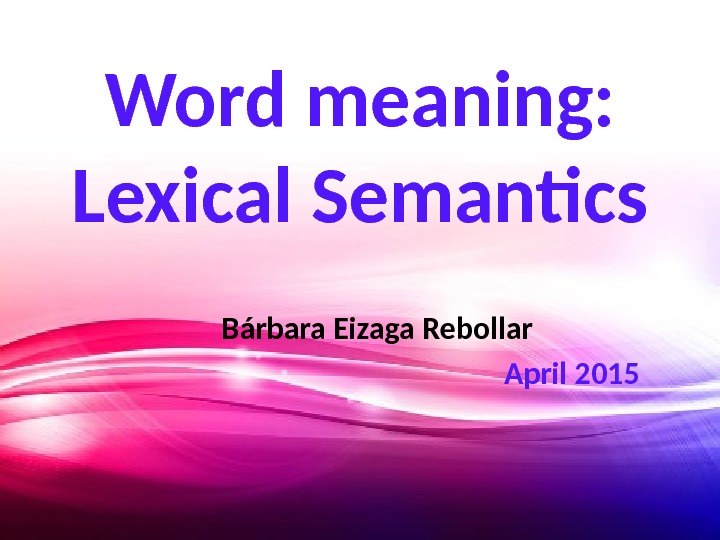
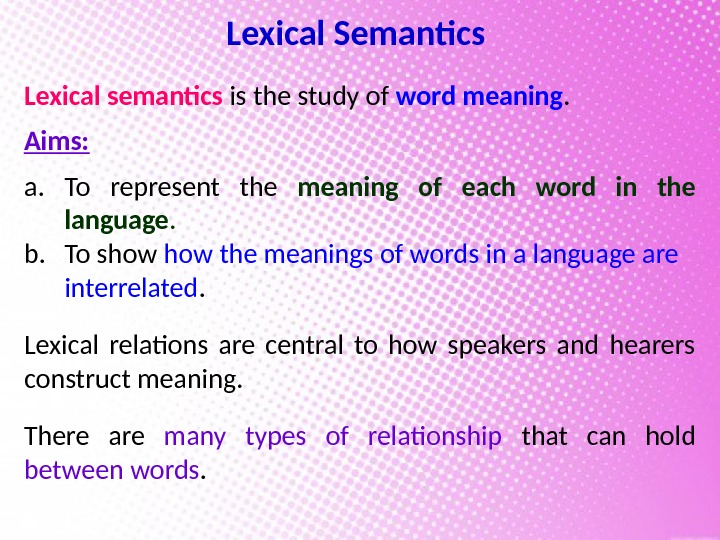
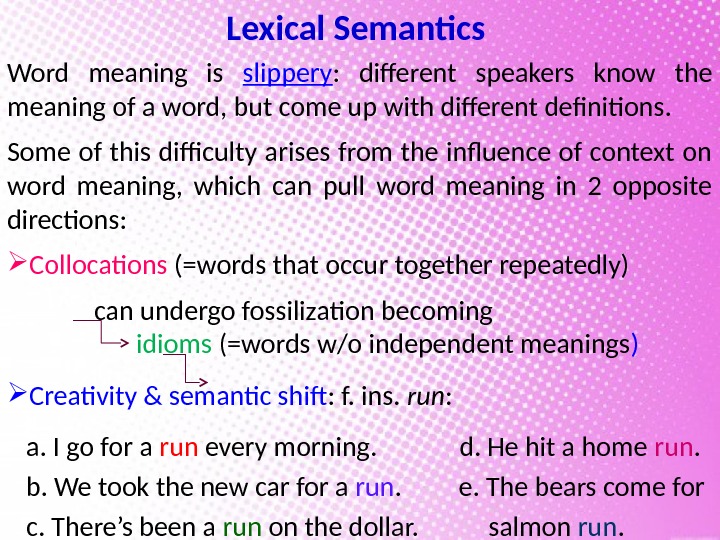
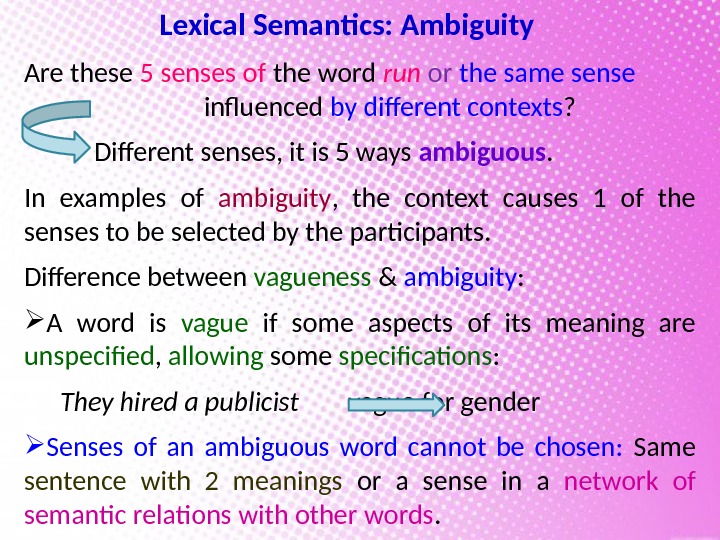
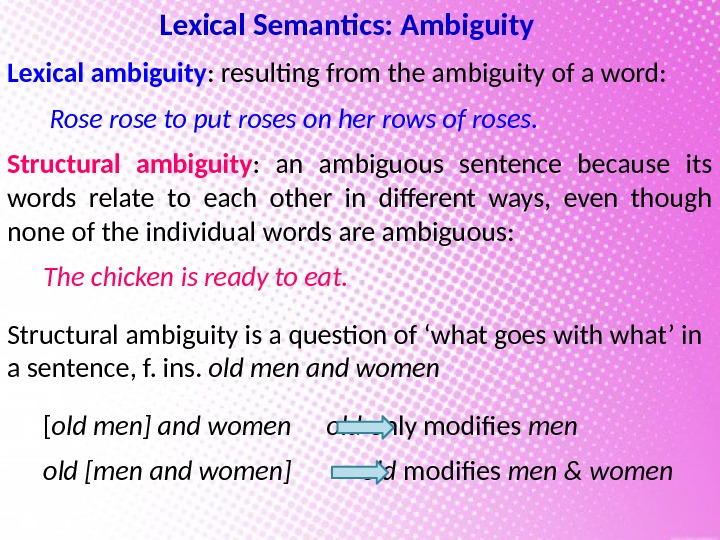
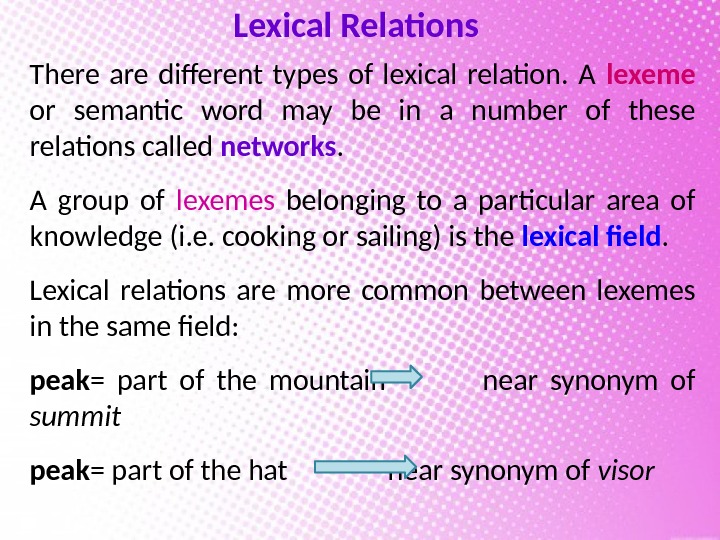
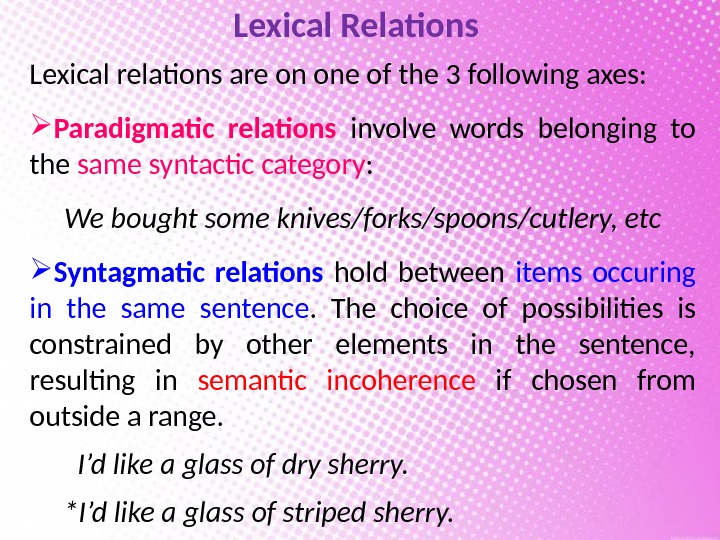
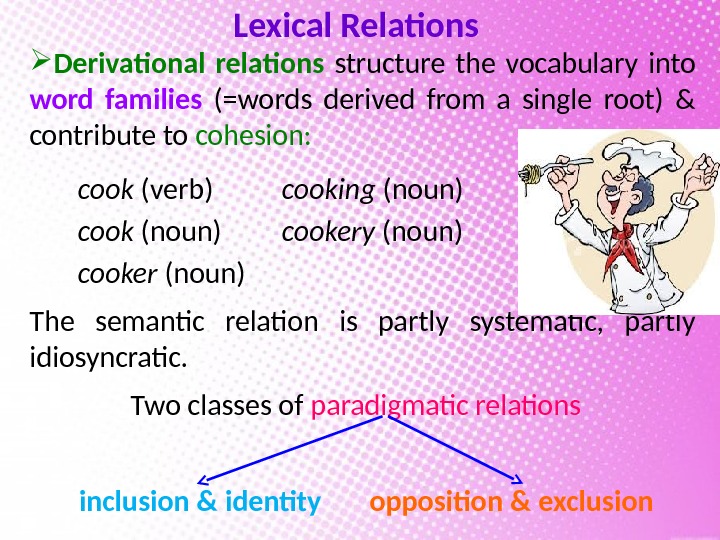
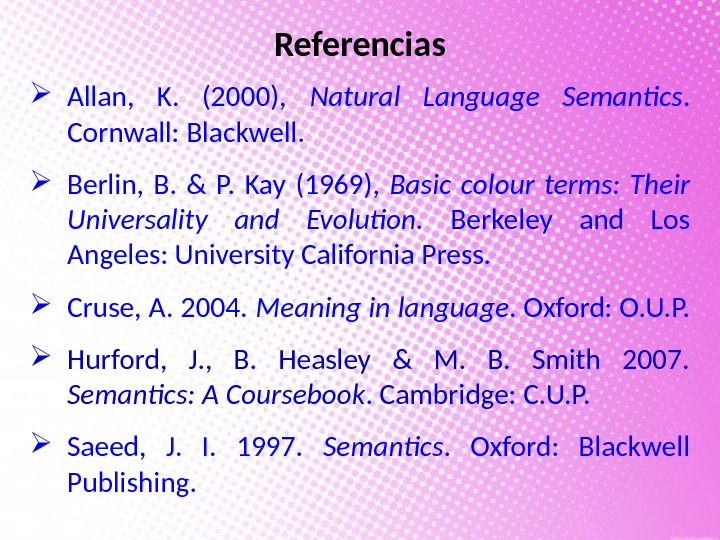
4.1._word_meaning,_lexical_relations.pptx
- Размер: 234.7 Кб
- Автор:
- Количество слайдов: 9
Описание презентации Word meaning: Lexical Semantics Bárbara Eizaga Rebollar по слайдам
 Word meaning: Lexical Semantics Bárbara Eizaga Rebollar April
Word meaning: Lexical Semantics Bárbara Eizaga Rebollar April
 Lexical Semantics Lexical semantics is the study of word meaning. Aims: a. To represent the meaning of each word in the language. b. To show the meanings of words in a language are interrelated. Lexical relations are central to how speakers and hearers construct meaning. There are many types of relationship that can hold between words.
Lexical Semantics Lexical semantics is the study of word meaning. Aims: a. To represent the meaning of each word in the language. b. To show the meanings of words in a language are interrelated. Lexical relations are central to how speakers and hearers construct meaning. There are many types of relationship that can hold between words.
 Lexical Semantics Word meaning is slippery : different speakers know the meaning of a word, but come up with different definitions. Some of this difficulty arises from the influence of context on word meaning, which can pull word meaning in 2 opposite directions: Collocations (=words that occur together repeatedly) can undergo fossilization becoming idioms (=words w/o independent meanings ) Creativity & semantic shif : f. ins. run : a. I go for a run every morning. d. He hit a home run. b. We took the new car for a run. e. The bears come for c. There’s been a run on the dollar. salmon run.
Lexical Semantics Word meaning is slippery : different speakers know the meaning of a word, but come up with different definitions. Some of this difficulty arises from the influence of context on word meaning, which can pull word meaning in 2 opposite directions: Collocations (=words that occur together repeatedly) can undergo fossilization becoming idioms (=words w/o independent meanings ) Creativity & semantic shif : f. ins. run : a. I go for a run every morning. d. He hit a home run. b. We took the new car for a run. e. The bears come for c. There’s been a run on the dollar. salmon run.
 Lexical Semantics: Ambiguity Are these 5 senses of the word run or the same sense influenced by different contexts ? Different senses, it is 5 ways ambiguous. In examples of ambiguity , the context causes 1 of the senses to be selected by the participants. Difference between vagueness & ambiguity : A word is vague if some aspects of its meaning are unspecified , allowing some specifications : They hired a publicist vague for gender Senses of an ambiguous word cannot be chosen: Same sentence with 2 meanings or a sense in a network of semantic relations with other words.
Lexical Semantics: Ambiguity Are these 5 senses of the word run or the same sense influenced by different contexts ? Different senses, it is 5 ways ambiguous. In examples of ambiguity , the context causes 1 of the senses to be selected by the participants. Difference between vagueness & ambiguity : A word is vague if some aspects of its meaning are unspecified , allowing some specifications : They hired a publicist vague for gender Senses of an ambiguous word cannot be chosen: Same sentence with 2 meanings or a sense in a network of semantic relations with other words.
 Lexical Semantics: Ambiguity Lexical ambiguity : resulting from the ambiguity of a word: Rose rose to put roses on her rows of roses. Structural ambiguity : an ambiguous sentence because its words relate to each other in different ways, even though none of the individual words are ambiguous: The chicken is ready to eat. Structural ambiguity is a question of ‘what goes with what’ in a sentence, f. ins. old men and women [ old men] and women old only modifies men old [men and women] old modifies men & women
Lexical Semantics: Ambiguity Lexical ambiguity : resulting from the ambiguity of a word: Rose rose to put roses on her rows of roses. Structural ambiguity : an ambiguous sentence because its words relate to each other in different ways, even though none of the individual words are ambiguous: The chicken is ready to eat. Structural ambiguity is a question of ‘what goes with what’ in a sentence, f. ins. old men and women [ old men] and women old only modifies men old [men and women] old modifies men & women
 Lexical Relations There are different types of lexical relation. A lexeme or semantic word may be in a number of these relations called networks. A group of lexemes belonging to a particular area of knowledge (i. e. cooking or sailing) is the lexical field. Lexical relations are more common between lexemes in the same field: peak = part of the mountain near synonym of summit peak = part of the hat near synonym of visor
Lexical Relations There are different types of lexical relation. A lexeme or semantic word may be in a number of these relations called networks. A group of lexemes belonging to a particular area of knowledge (i. e. cooking or sailing) is the lexical field. Lexical relations are more common between lexemes in the same field: peak = part of the mountain near synonym of summit peak = part of the hat near synonym of visor
 Lexical Relations Lexical relations are on one of the 3 following axes: Paradigmatic relations involve words belonging to the same syntactic category : We bought some knives/forks/spoons/cutlery, etc Syntagmatic relations hold between items occuring in the same sentence. The choice of possibilities is constrained by other elements in the sentence, resulting in semantic incoherence if chosen from outside a range. I’d like a glass of dry sherry. *I’d like a glass of striped sherry.
Lexical Relations Lexical relations are on one of the 3 following axes: Paradigmatic relations involve words belonging to the same syntactic category : We bought some knives/forks/spoons/cutlery, etc Syntagmatic relations hold between items occuring in the same sentence. The choice of possibilities is constrained by other elements in the sentence, resulting in semantic incoherence if chosen from outside a range. I’d like a glass of dry sherry. *I’d like a glass of striped sherry.
 Lexical Relations Derivational relations structure the vocabulary into word families (=words derived from a single root) & contribute to cohesion: cook (verb) cooking (noun) cook (noun) cookery (noun) cooker (noun) The semantic relation is partly systematic, partly idiosyncratic. Two classes of paradigmatic relations inclusion & identity opposition & exclusion
Lexical Relations Derivational relations structure the vocabulary into word families (=words derived from a single root) & contribute to cohesion: cook (verb) cooking (noun) cook (noun) cookery (noun) cooker (noun) The semantic relation is partly systematic, partly idiosyncratic. Two classes of paradigmatic relations inclusion & identity opposition & exclusion
 Referencias Allan, K. (2000), Natural Language Semantics. Cornwall: Blackwell. Berlin, B. & P. Kay (1969), Basic colour terms: Their Universality and Evolution. Berkeley and Los Angeles: University California Press. Cruse, A. 2004. Meaning in language. Oxford: O. U. P. Hurford, J. , B. Heasley & M. B. Smith 2007. Semantics: A Coursebook. Cambridge: C. U. P. Saeed, J. I. 1997. Semantics. Oxford: Blackwell Publishing.
Referencias Allan, K. (2000), Natural Language Semantics. Cornwall: Blackwell. Berlin, B. & P. Kay (1969), Basic colour terms: Their Universality and Evolution. Berkeley and Los Angeles: University California Press. Cruse, A. 2004. Meaning in language. Oxford: O. U. P. Hurford, J. , B. Heasley & M. B. Smith 2007. Semantics: A Coursebook. Cambridge: C. U. P. Saeed, J. I. 1997. Semantics. Oxford: Blackwell Publishing.
